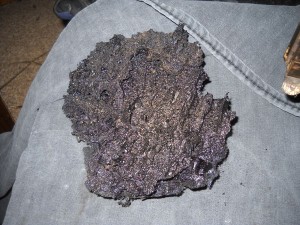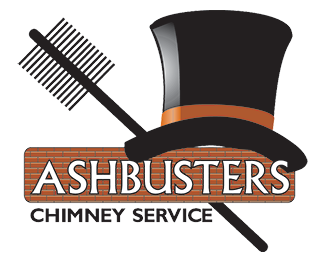The best way to keep your chimney free of creosote is to never burn wood in your fireplace. Far from flippant advice, this is meant to bring into sharp focus what happens with every use of a wood-burning fireplace. Every time smoke carries combustibles up the chimney, creosote forms – first as soot, and then not too long thereafter as crunchy Stage 2 creosote.

This image is courtesy of Dennis Lamb, Owner of The Mad Hatter in Indianapolis, IN.
The reason for creosote development into later stage forms is that it takes longer and longer to dry as it thickens. It is left on the flue liner every time oily gases from incompletely burned wood go up the chimney in smoke. When they condense in a cool chimney, they stick a new deposit of creosote to the outermost flue surface.
If that outermost surface is a ‘clean’ flue, the only creosote left on it is soot. As that soot thickens, however, it takes longer to burn off, and Stage One creosote becomes the flue’s outermost surface. Stage Two creosote sticks to that and again begins to develop outward, now a crunchy substance, making its own drying even harder.
Left unchecked, its development continues to a third “glaze” stage and a possible chimney fire. If you do not think total abstinence is the way to approach this by-product of wood burning, there are more practical things you can do. Regular cleanings by a CSIA certified sweep to thoroughly remove creosote while it is still in Stage One form is clearly on the list.
A few other ways you can help to keep your flue ‘clean’ may be less obvious:
- Make sure your flue and firebox are the right size
- Burn only well seasoned wood
- Keep water off your outdoor woodpile
- Keep water out of your chimney
- Maximize the chimney’s draft
- Build your fire on a grate
- Build it an inch from the back of the fireplace
